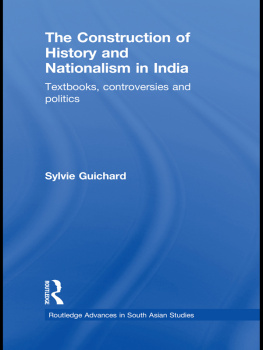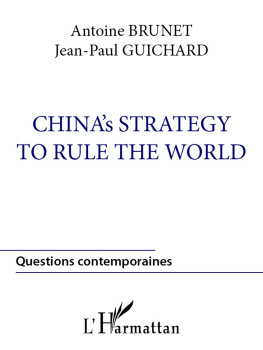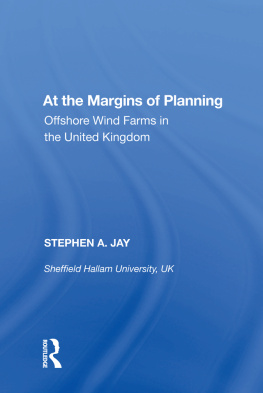At the Margins
Four Years in South Asia and West Africa
Roger H. Guichard, Jr
At the Margins
Four Years in South Asia and West Africa
Copyright 2017 Roger H. Guichard, Jr. All rights reserved. Except for brief quotations in critical publications or reviews, no part of this book may be reproduced in any manner without prior written permission from the publisher. Write: Permissions, Wipf and Stock Publishers, 199 W. 8th Ave., Suite 3, Eugene, OR 97401.
Wipf & Stock
An Imprint of Wipf and Stock Publishers
W. th Ave., Suite
Eugene, OR 97401
www.wipfandstock.com
paperback isbn: 978-1-5326-1856-7
hardcover isbn: 978-1-4982-4424-4
ebook isbn: 978-1-4982-4423-7
Manufactured in the U.S.A. July 6, 2017
Maps are reproduced under license from Shutterstock.
Table of Contents
For Martha, without whose spur
none of the following would have happened.
Preface
A t the Margins tells the story of living and working in the Afghan program in Pakistan for three years in the early 1990 s followed by fourteen months in Niger in West Africa. The title comes from the fact that South Asia and West Africa represent relative extremes in the geographical reach of Islam. It is the second book in a series chronicling my twenty-five years in the Muslim World. The first, Masr, an Egyptian Miscellany , was published by Wipf & Stock in 2015 .
I came to Pakistan in 1991 after ten years in the Arab world. For most of that time Arab eyes were fixed on the Indian subcontinent because of the Russian occupation of Afghanistan. Saudi Arabia in the s had been a hotbed of resistance to the Soviets and exhibits in Jidda displayed grisly photographs of civilian mine victims and memorabilia taken from the corpses of Russian soldiers. Collectively the Arab world, along with America, were the greatest supporters of jihad in Afghanistan, although the integration of Arab volunteers into the resistance in Pashtun areas was not without friction.
But the Indian subcontinent was not entirely unfamiliar territory. My undergraduate background was in English literature, but it had been exposure not only to novelists and poets, but also to Victorian prose essayists: Hazlitt, Darwin, Huxley, Mill, Morris, Arnold, Burton, Palgrave, and Bell. For some of them experience of India was direct: Richard Burton and Gifford Palgrave were posted to the west coast early in their military careers and John Stewart Mill, arguably the greatest English-speaking philosopher of the nineteenth century, was for years a servant of the Company of Merchants of London trading into the East Indies. For others, the connection was more distant.
However, for all of them empireand Indiawas a constant, if unspoken, preoccupation throughout the century during which it achieved its greatest geographical extent. If nothing else there was the Sepoy Rebellion in 1857 that was as traumatic for mid-nineteenth century Britain as the attack on the twin towers was for the United States in the early twenty-first. The reaction was nearly as fierce. The events of 1857 may have put an end to the Company, but not to empire, and twenty years later Queen Victoria would assume the honorific Empress of India. It would be another seven decades before the ties with India were finally severed.
So, in a sense, Indiawrit largeseemed as much part of my background as Arabia. And Pakistan remained India in my mind, if by that was meant a part of the larger subcontinent. Even today there remained vestiges of the Raj, if only in the English spoken by the natives of the two countries. And the major languages traditionally spoken in the subcontinent were still there: Urdu, with its sister Hindi, as the everyday language of the people, Arabic as the language of religion, and Farsi as a remnant of Persian influence at the Moghul court. Although Arabic is not widely spoken in the subcontinent, long familiarity with its structure, not to mention its influence on the lexicons of languages that are spoken there, provided me with a ready entre into the thinking of the people of the region.
A word about methodology is in order. Rather than a chronological or more conventional arrangement, this booklike Masr consists of a series of themed essays that are intended to shed light on a particular aspect of the countries in question. The light is often indirect, reflecting the human side of the story. I believe that this provides a more nuanced view of a part of the world that is often portrayed only in primary colors. The inhabitants of Pakistan, Afghanistan, and Niger are allowed to speak for themselves. They do not represent a monolith. Along with Muslim societies elsewhere they struggle with the challenges to a deeply-rooted religion in an increasingly secular world.
This has generated a drumbeat of bad news from a region extending from West Africa through the Levant to the Indian subcontinent and Central Asia. But there has always existed an undercurrent of decency and reason, often expressed sotto voce, and I have tried to capture some of those murmurs. While the essays exhibit little of a typical scholarly approach, they are informed with facts and citations woven into the narratives. They constitute a firsthand record of incidents and impressions as they occurred, unfiltered through any prism of later knowledge. I believe that the witness the essays offer, the record of an important period in history, is as pertinent today as the day they were written.
The pieces that follow, some long and some short, chronicle a period working in Pakistan on the Afghan program for a private American company that acted as a kind of factotum for USAID. With the chaos that accompanied the Soviet withdrawal, Afghanistan was deemed too dangerous for an official American presence. So, we pulled the stringsif it could be said that anyone truly pulled the strings in that countryremotely from Islamabad, Peshawar, and Quetta. In that respect, the old relationship between India and Afghanistan still prevailed.
Niger may seem an odd pairing with Afghanistan, but the assignments were of a piece: large-scale commodities and infrastructure assistance for impoverished, overwhelmingly Muslim countries in the throes of man-made and natural disasters. According to a 2011 Pew Research Center listing, Afghanistan was . percent Muslim, Niger was . percent, and Pakistan was relatively cosmopolitan at . percent. The countries occupied almost polar extremes in the African and Eurasian landmass, Niger in West Africa and Afghanistan and Pakistan in Southwest Asia. All were early converts to Islam and had long histories of Islamic learning. There the similarities seemed to end.
But the Sahel, of which Niger mostly consists, has become a battle ground of late. In 2017 the United States is spending millions on a drone base in Agadez in northern Niger as part of its effort to monitor Islamic State insurgents in a broad swath of Africa from Senegal to Chad. In the last decade of the twentieth century, Niger was largely immune to the bacillus of Islamism. But the spread was inexorable and the familiar issues of corruption, rapid population growth, inequality, and diminished opportunities have combined with religious zealotry to spark violent eruptions against the existing order. It would be immodest to claim that in we saw it coming, but the ingredients were already there. We should not be surprised at the spread.










